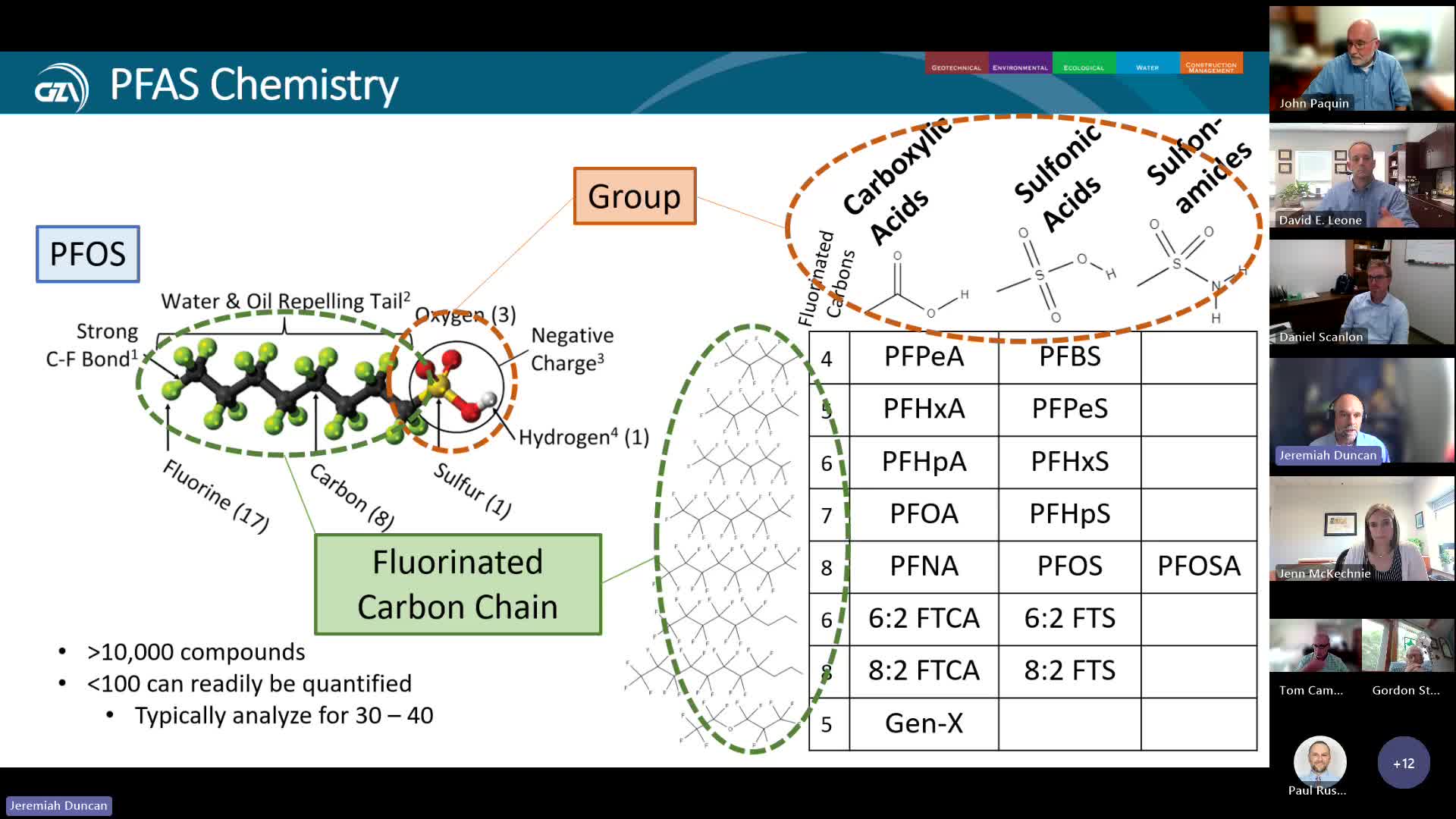Groundwater Analysis Uncovers Complex PFAS Patterns Near Fire Training Facility
August 01, 2025 | Barnstable County, Massachusetts
This article was created by AI summarizing key points discussed. AI makes mistakes, so for full details and context, please refer to the video of the full meeting. Please report any errors so we can fix them. Report an error »

The Barnstable County government meeting held on August 1, 2025, focused on the ongoing remediation efforts related to PFAS (per- and polyfluoroalkyl substances) contamination, particularly from the fire training facility and surrounding areas. The meeting provided updates on the forensic analysis of PFAS compounds, emphasizing the complexity and variety of these substances.
The discussion began with a detailed explanation of PFAS, specifically highlighting PFOS (perfluorooctanesulfonic acid) as a prominent example. The speaker, a chemist, described the molecular structure of PFAS, noting the significance of its functional groups and the varying lengths of the carbon chains that contribute to the diversity of PFAS compounds. This foundational knowledge is crucial for understanding the forensic work being conducted to identify contamination sources.
Visual data representations, including bar graphs, were presented to illustrate the different types of PFAS compounds detected in groundwater samples. The graphs were color-coded to differentiate between sulfonic acids, like PFOS, and carboxylic acids, such as PFOA (perfluorooctanoic acid). The analysis revealed distinct patterns in the groundwater samples, particularly around the fire training facility, which has a history of using various firefighting foams containing PFAS.
The meeting also addressed the groundwater flow patterns, which are essential for understanding how PFAS contamination spreads. It was noted that the complexity of the contamination is compounded by the use of multiple generations of firefighting foams from different manufacturers over the years. This has resulted in a complex mixture of PFAS compounds in the groundwater.
Additionally, the analysis indicated potential other sources of PFAS contamination, particularly near the airport, suggesting that the contamination may not solely originate from the fire training facility. This finding highlights the need for further investigation into the various sources contributing to the PFAS levels in the area.
In conclusion, the meeting underscored the intricate nature of PFAS contamination in Barnstable County, with ongoing forensic analysis revealing new insights into the sources and patterns of these harmful substances. The next steps will involve continued monitoring and investigation to address the contamination effectively.
The discussion began with a detailed explanation of PFAS, specifically highlighting PFOS (perfluorooctanesulfonic acid) as a prominent example. The speaker, a chemist, described the molecular structure of PFAS, noting the significance of its functional groups and the varying lengths of the carbon chains that contribute to the diversity of PFAS compounds. This foundational knowledge is crucial for understanding the forensic work being conducted to identify contamination sources.
Visual data representations, including bar graphs, were presented to illustrate the different types of PFAS compounds detected in groundwater samples. The graphs were color-coded to differentiate between sulfonic acids, like PFOS, and carboxylic acids, such as PFOA (perfluorooctanoic acid). The analysis revealed distinct patterns in the groundwater samples, particularly around the fire training facility, which has a history of using various firefighting foams containing PFAS.
The meeting also addressed the groundwater flow patterns, which are essential for understanding how PFAS contamination spreads. It was noted that the complexity of the contamination is compounded by the use of multiple generations of firefighting foams from different manufacturers over the years. This has resulted in a complex mixture of PFAS compounds in the groundwater.
Additionally, the analysis indicated potential other sources of PFAS contamination, particularly near the airport, suggesting that the contamination may not solely originate from the fire training facility. This finding highlights the need for further investigation into the various sources contributing to the PFAS levels in the area.
In conclusion, the meeting underscored the intricate nature of PFAS contamination in Barnstable County, with ongoing forensic analysis revealing new insights into the sources and patterns of these harmful substances. The next steps will involve continued monitoring and investigation to address the contamination effectively.
View full meeting
This article is based on a recent meeting—watch the full video and explore the complete transcript for deeper insights into the discussion.
View full meeting
